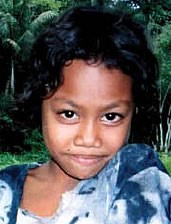Temuan, Benua in Malaysia

Photo Source:
Copyrighted © 2026
Southeast Asia Link - SEALINK All rights reserved. Used with permission |
Send Joshua Project a map of this people group.
|
| People Name: | Temuan, Benua |
| Country: | Malaysia |
| 10/40 Window: | Yes |
| Population: | 36,000 |
| World Population: | 36,000 |
| Primary Language: | Temuan |
| Primary Religion: | Ethnic Religions |
| Christian Adherents: | 5.80 % |
| Evangelicals: | 5.20 % |
| Scripture: | Translation Needed |
| Ministry Resources: | No |
| Jesus Film: | No |
| Audio Recordings: | No |
| People Cluster: | West Malaysia Indigenous |
| Affinity Bloc: | Malay Peoples |
| Progress Level: |
|
Introduction / History
The Temuan are the third largest tribe of the nineteen Orang Asli people groups living in Peninsular Malaysia. The government categorizes them under the Aboriginal Malay (officially called Proto-Malay) subgroup.
The Temuan villages (between 50 to 500 people) are found on the lowland valleys of districts in the states of Malacca, Negeri Sembilan, Pahang, Selangor, and Johor.
What Are Their Lives Like?
The Temuan are physically indistinguishable from Malays. They are very much influenced by the culture of the Malay people with whom they frequently come into contact. In the past, they were basically rural peasants. They grew some subsistence crops, hunted and gathered in nearby forests, and fished in rivers. To get cash for food, cigarettes, clothing, and tools, they tapped rubber, collected forest produce, sold fruit, and did occasional wage labor.
In the past, their main economic activity was cultivating irrigated rice. The Temuan villagers were skillful rice planters, experienced in engineering skills needed to regulate the flow of water to the fields. Too much or too little water will adversely affect the growth of rice plants. Shortly before harvest time, the people will drain the water from the fields. Throughout the rice growing process, people had to continuously guard the rice from ricebirds, field rats, and insects. Every family member was involved in guarding the ripening rice in some way. It was common to see young children armed with slingshots shooting at the ricebirds. During the rice harvest, groups wielding sticks hunted rats in the field. Today, only a few Temuan are involved in planting seedlings in compact nursery plots, hoeing the main fields, and constructing dikes and canals. Increasing contact with the "outside world" has caused many Temuan villages, like some other Orang Asli groups, to turn from being sedentary rice farmers to become nomads living in uncertainty.
To expand their rice fields, Malays from neighboring villages gradually took over the best Temuan rice land by obtaining legal titles to it. To avoid confrontation and further harassment as the Malay population increased, they have moved to other locations.
What Are Their Beliefs?
While the Temuan speak of a high god called Tuhan, they are basically animists. They believe that spirits, known as hantu, inhabit large boulders, rivers, tall trees, and mountains. Raja Mountain, which sits on the Selangor-Negeri Sembilan border, is considered sacred. An ancient legend states that it was on this mountain that their ancestors took refuge during the great flood, which wiped out mankind.
There is also a Christian population among them that can be salt and light to others.
What Are Their Needs?
Development and modernization have adversely affected the Temuan. Their land to grow crops, their forest to collect produce or to hunt for food and their streams to fish are diminishing. Pray that local believers will relate and respond to all the needs of the Temuan.
Prayer Points
Pray for the Holy Spirit to abundantly bless Temuan families and churches with an unwavering love for Christ.
Pray for the Lord to call and send Temuan Christians to share faith in Christ with Muslims.
Pray that soon Temuan disciples will make disciples of Malay Muslims.
Pray for Temuan churches to be known for boldness and love.